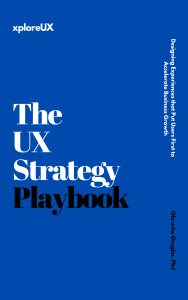
User experience is more than just a design element; it is a strategic tool that can turn obstacles into stepping stones for growth. By focusing on how users interact with products and services, businesses can identify challenges, address pain points, and create innovative solutions that drive engagement and loyalty. This article explores how leveraging UX can convert challenges into growth opportunities, offering actionable insights to help businesses thrive.
Challenges are inevitable in any business. Whether it’s a drop in user engagement, negative feedback, or stagnating growth, these hurdles often signal underlying issues in how users perceive and interact with your product. UX plays a pivotal role in identifying these friction points.
Through user research, data analysis, and empathy-driven design, UX professionals can pinpoint the gaps between user expectations and actual experiences. These insights allow businesses to make informed decisions, turning once-overlooked issues into opportunities for improvement.
For instance, if users frequently abandon their shopping carts on an e-commerce site, it’s a challenge that could hinder revenue growth. A UX-focused approach would analyse the checkout process, identify barriers like complicated forms or unexpected fees, and redesign the experience to make it seamless and intuitive. The result? Higher conversions and happier customers.
UX research is a powerful tool for uncovering growth opportunities. It goes beyond surface-level metrics to understand user behavior, motivations, and frustrations. By employing methods such as user interviews, usability testing, and surveys, businesses can gather qualitative and quantitative data that reveals what users truly need.
For example, a mobile app struggling with low retention rates might discover through UX research that users find its interface confusing. Armed with this knowledge, the company can redesign the app to be more intuitive, ultimately increasing user retention and satisfaction.
Moreover, UX research helps businesses stay ahead of trends by identifying emerging user needs. By proactively addressing these needs, companies can position themselves as leaders in their industry.
A user-centric mindset is the foundation of successful UX. It involves prioritising the needs, preferences, and expectations of users at every stage of the product development process. This approach not only resolves challenges but also fosters trust and loyalty.
Consider the example of a SaaS company that receives complaints about its complex onboarding process. By adopting a user-centric mindset, the company can redesign the onboarding experience to guide users step-by-step, ensuring they quickly understand the product’s value. This not only reduces churn but also creates advocates who are more likely to recommend the service to others.
Feedback is a goldmine for UX-driven growth. Every complaint, suggestion, or question from users is an opportunity to improve. Businesses that actively seek and act on feedback demonstrate their commitment to delivering exceptional experiences.
For instance, a fitness app that receives feedback about its lack of customisation options can use this information to develop personalised workout plans. By addressing this challenge, the app not only satisfies its current users but also attracts new ones seeking tailored solutions.
To make the most of feedback, businesses should create clear channels for users to share their thoughts, such as surveys, in-app prompts, or community forums. This continuous loop of feedback and improvement ensures that the product evolves in line with user expectations.
Accessibility is a critical aspect of UX that often reveals untapped growth opportunities. By designing products that are inclusive and usable for people of all abilities, businesses can reach a wider audience and foster goodwill.
For example, adding features like voice navigation, adjustable font sizes, or color contrast options can make a website or app more accessible to users with disabilities. These enhancements not only comply with legal standards but also demonstrate a commitment to inclusivity, which resonates with a broader user base.
Addressing accessibility challenges also improves the overall user experience for everyone, as features designed for specific needs often benefit all users.
Iterative design is a cornerstone of UX that allows businesses to continuously refine their products. By testing, analysing, and iterating, companies can address challenges incrementally, ensuring that each version of their product is better than the last.
For example, a streaming platform might use A/B testing to evaluate different interface layouts. By analysing user behavior and feedback, the platform can determine which design performs better and implement it across the board. This iterative approach not only solves existing challenges but also fosters innovation, keeping the product competitive.
UX is not just about functionality; it’s also about creating emotional connections with users. A product that resonates on an emotional level can turn casual users into loyal advocates.
Consider a meal delivery service that personalises its app with features like favorite meal suggestions, timely reminders, and heartfelt thank-you messages. These small touches create a sense of care and appreciation, making users more likely to stay engaged and recommend the service to others.
By addressing emotional challenges—such as feelings of frustration, confusion, or neglect—businesses can foster deeper connections that drive long-term growth.
To ensure that UX efforts translate into growth, businesses must measure their impact using key performance indicators (KPIs). Metrics such as user retention, conversion rates, and customer satisfaction scores provide valuable insights into the effectiveness of UX initiatives.
For example, a travel booking site that simplifies its search functionality might track metrics like search-to-booking conversion rates and time spent on the platform. If these metrics improve, it’s a clear indication that the UX enhancements are driving growth.
Regularly monitoring these KPIs allows businesses to fine-tune their strategies and maximise the return on their UX investments.
For UX to become a growth driver, it must be embraced at every level of the organisation. This requires fostering a culture that values user feedback, encourages cross-functional collaboration, and invests in UX expertise.
Empowering teams to prioritise UX means equipping them with the tools, resources, and autonomy to make user-focused decisions. This might involve hiring dedicated UX professionals, providing training on UX best practices, or integrating UX principles into the company’s mission and values.
When UX becomes a shared responsibility, businesses are better positioned to overcome challenges and seize growth opportunities.
UX as a strategy to turn challenges into growth opportunities can redefine how businesses approach problem-solving and innovation. By focusing on user needs and behavior, companies can transform obstacles into opportunities to create value. This approach is not just about addressing issues but about actively seeking ways to improve and excel by engaging with users and understanding their perspectives.
One key aspect of this strategy is the ability to adapt to feedback. Users often provide invaluable insights into what works and what doesn’t. By embracing this feedback and making iterative improvements, businesses can refine their products and services to better align with user expectations. Each iteration brings an opportunity to address pain points, streamline processes, and enhance the overall experience. This not only resolves immediate challenges but also fosters trust and loyalty among users.
Accessibility is another area where UX can drive growth. Ensuring that products and services are inclusive and usable for all individuals, regardless of their abilities, opens doors to a broader audience. Accessibility improvements often result in more intuitive and user-friendly designs for everyone, creating a win-win scenario. By addressing accessibility challenges, businesses demonstrate a commitment to inclusivity, which can significantly enhance their reputation and user engagement.
UX also plays a vital role in building emotional connections with users. Thoughtful design, clear communication, and a deep understanding of user emotions can transform a functional interaction into a memorable experience. When users feel understood and valued, they are more likely to remain loyal and advocate for the brand. These emotional connections often become a driving force behind long-term growth and success.
By placing UX at the forefront of their strategy, businesses can cultivate a mindset of continuous improvement and innovation. Challenges become opportunities to explore creative solutions and push boundaries. This proactive approach ensures that businesses not only keep pace with changing user needs but also stay ahead of competitors.
Ultimately, the right focus on UX transforms challenges into opportunities to innovate, improve, and build stronger relationships with users. By prioritizing user-centric solutions, companies can ensure sustained growth, foster loyalty, and create exceptional experiences that set them apart in a competitive market.







